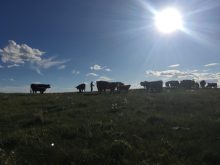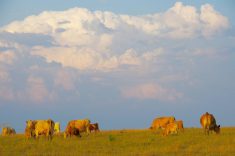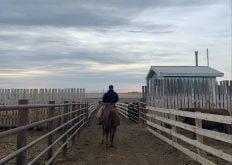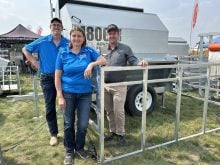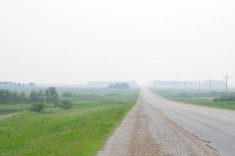With persistent drought a reality of life in Western Canada and beyond, ranchers across the country are looking for solutions to keep their pastures flourishing even when moisture is lacking.
Through a study done with the University of Alberta on rotational grazing, Dr. Timm Döbert may have helped find a solution.
Read Also

Canadian Beef Check-Off Agency reports on investments and activities
The check-off agency’s work behind the scenes is what ensures cattle check-off dollars are invested wisely, accounted for transparently and deliver measurable value back to producers and importers.
A post-doctoral fellow at the U of A and part of the research team, Döbert published a paper in 2021 looking at how adaptive multi-paddock (AMP) grazing increased water infiltration.
“The major finding was definitely that AMP-grazed ranches had around 30 per cent more water infiltration,” he says. “If we look at the actual practices, we found that the rest period is driving those benefits. So it’s not the herding effects, it’s not how many animals are on the ground. But it’s the rest periods out of those two factors.”
AMP is an intensive rotational grazing practice that focuses on having long rest periods between grazes. The thought behind this is to manage the land in a way that is reminiscent of how the buffalo would have grazed the grasslands before settlers started farming the land. According to Döbert, 80 per cent of cattle producers practice rotational grazing, but only five to 10 per cent practice AMP management.

The project Döbert was involved with was completed in March of 2021, where a group of U of A researchers looked at 70 different ranches from across the Prairies, comparing those using AMP grazing with those that didn’t. Spearheaded by Dr. Mark Boyce, the study took five years and looked at not only water infiltration, but also carbon sequestration, nitrogen concentrations, microbial communities and more.
Specifically, for the work Döbert did, they examined the difference between water infiltration when it came to AMP grazing or not.
“Infiltration is not necessarily 100 per cent correlated to availability,” Döbert says. “But obviously, if more water is infiltrating into the soil, there’s a much greater chance that more water is also going to be available over time. So again, it’s not 100 per cent correlation. But the chance that more water is available, because significantly more water infiltrates is greater.”
Other things that impact water infiltration according to the study is the litter in the soil, and the bulk density — or the compaction — of the soil.
“We found that bulk density, so when there’s more compaction, basically, the water infiltration goes down, which is pretty much intuitive, but we still had to test for this,” Döbert says. “And then litter on the contrary, if you have more litter, like dead plant material right on the ground, this is benefiting water infiltration.”
Going forward, Döbert says he hopes ranchers consider using AMP management to create more water infiltration.
“Looking at the water infiltration, it shows very clearly a rest period is very important. So how this then translates to a rancher being willing to implement certain changes, I think that really comes down to the rancher being open to changes and being willing to talk to people already doing something in the space.”
Döbert also emphasized the importance of protecting natural grasslands, saying native grasslands are needed to sequester more carbon from the atmosphere and create biodiversity.
“Protecting grasslands is really at the heart of all the work we’re doing,” he says. “There’s a lot of benefit by really using them sustainably and more regeneratively.”
This article is part of a series. For more see:




